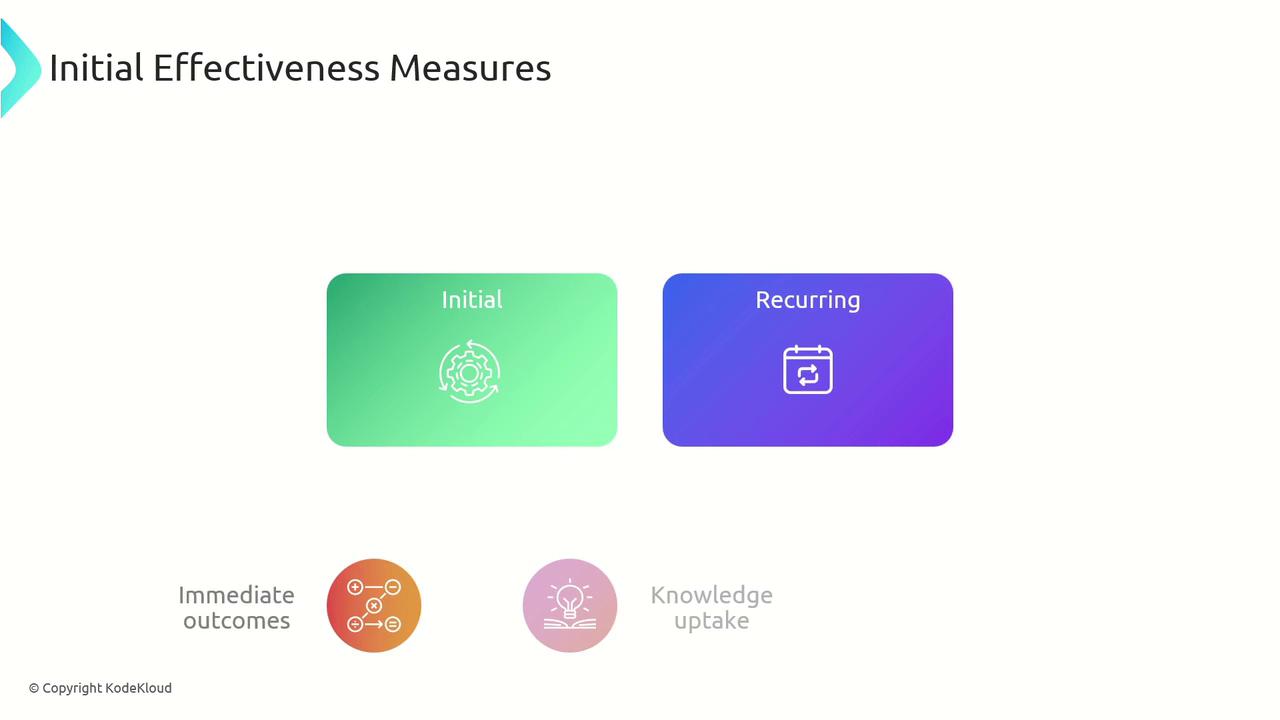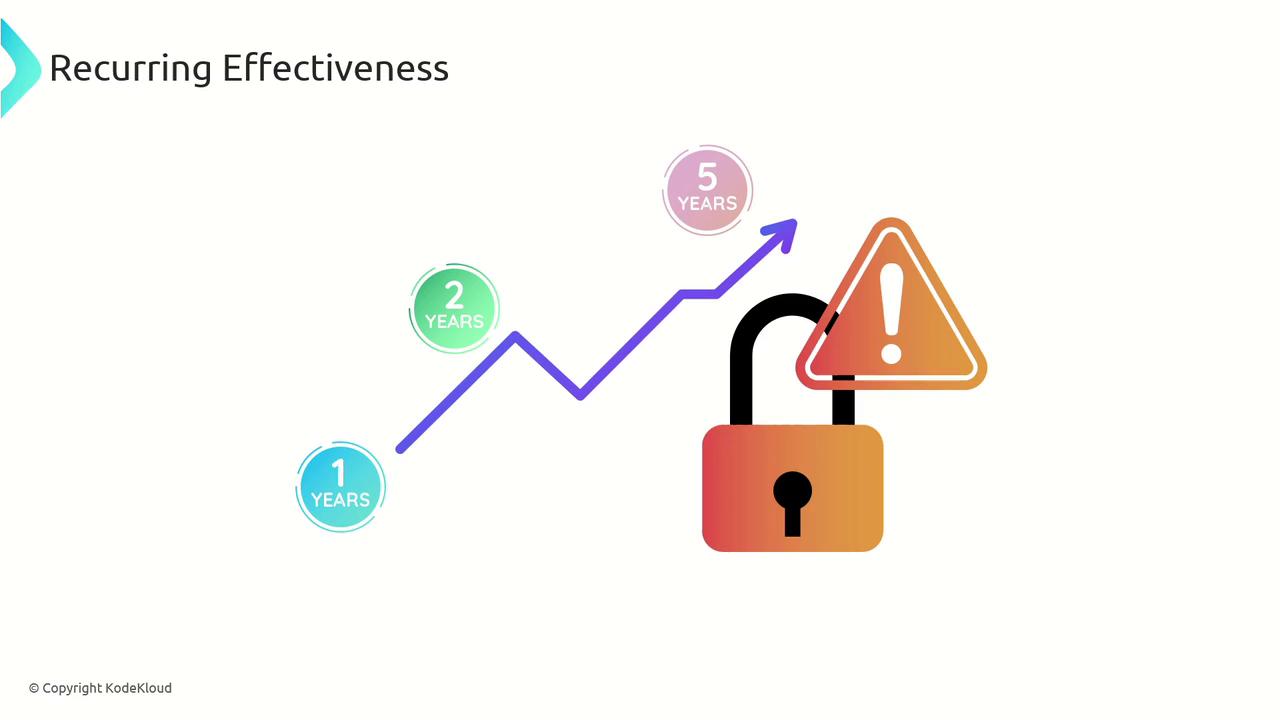CompTIA Security+ Certification
Security Management
Reporting and Monitoring
Evaluating the success of your security awareness training is vital both immediately after implementation and over the long term. This guide explains how to measure the impact of your security training program through initial and recurring assessments, ensuring that your team is equipped with lasting security practices.
Initial Effectiveness
Initial effectiveness focuses on the immediate changes in behavior following the training. The primary goal is to identify measurable shifts in security practices right after the session. Evaluation methods include:
- Pre- and post-assessments for baseline and post-training comparisons
- Quizzes and surveys to gauge the participants’ understanding of the security concepts before and after the training session
These evaluation techniques help determine whether the participants have successfully absorbed the training content and are immediately applying the new security measures.

Note
For best results, ensure that the assessments are conducted in a controlled environment to minimize external variables that could affect the evaluation outcomes.
Recurring Effectiveness
Recurring effectiveness focuses on the long-term impact of the training. It examines if participants have retained the security knowledge and practices over time. This sustained evaluation is essential for fostering an enduring culture of security awareness.

In addition to the initial assessments, recurring evaluations can incorporate:
Tracking incident-reporting metrics to analyze trends and changes over time
Conducting phishing simulations and security campaigns to monitor behavioral improvements
Gathering feedback from managers and supervisors on employee security practices
Monitoring performance indicators, such as:
Performance Indicator Description Reported Incidents Number of security incidents reported by employees Password Change Frequency Regularity of password updates among users Compliance with Security Policies Adherence to established security protocols Training Completion Rates Percentage of employees who have completed security training modules
Warning
Neglecting recurring evaluations can lead to undetected security gaps. Regular assessments are critical in ensuring that the training yields long-term benefits and that potential vulnerabilities are promptly addressed.
![]()
By combining both initial and recurring assessments, organizations can gain a comprehensive understanding of their security awareness training's impact. Immediate measurements capture short-term improvements, while ongoing evaluations ensure that security practices are consistently maintained and enhanced over time. For further insights on effective security training strategies, consider exploring additional resources such as the Kubernetes Documentation or Docker Hub.
Watch Video
Watch video content